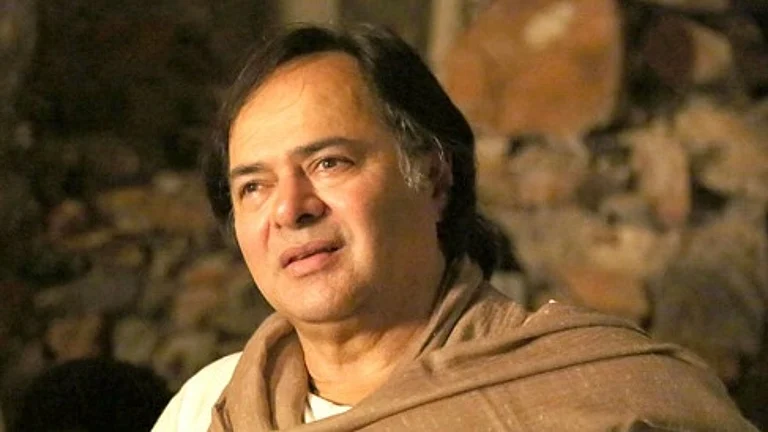Incest: Sexual intercourse between people who are too closely related to marry (as between brother and sister or father and daughter).
It was sometime in May this year when I was strolling through the bustling bylanes of Bengaluru amidst a light downpour that I stopped by a famed bookshop and entered it with an intent to flaneur. There was a sea of books, old and new, fresh and torn that bedecked the walls. There were several rooms and alleys displaying the vast collection of books and at one corner positioned opposite to the wooden staircase that bridged the ground floor with the upper floors, books lay scattered in a dishevelled manner.
Settling onto my haunches, I ran my fingers along the spines of the literary gems, be it the first shelf encountered or the last, depending on one’s chosen path. Among these books, a tapestry of familiar and unfamiliar names unfolded before me, inviting delightful exploration.
As I looked through the dimly lit space, my eyes caught the sight of the silhouette of a young girl, seemingly in her 20s, positioned atop a pedestal, her vulnerability laid bare as she sat in a contemplative, almost mournful posture. Completely nude, she crouched forward, her back turned to me, her arms resting on her knees and her head bowed in what appeared to be a poignant representation of captivity and yearning. The sight was striking: she seemed like a living statue, her body betraying the prolonged duration of her entrapment. In her solitude, she evoked an image of a creature confined, akin to a bird ensnared within the confines of a cage, held captive for the mere amusement of her captors. I extended my hands towards her, gingerly sifting through the dust-eaten books that lay in front of it. I brought out the book in whose cover page lay the naked woman captive, and the title of the book was ‘Incest: Marquis de Sade’.
In the hallowed annals of literature, one encounters rare tomes that dare to traverse the abyss of human darkness, and among these enigmatic manuscripts emerges the provocative opus titled ‘Incest’ by the enigmatic Marquis de Sade, infamous for his libertine and controversial writings, exploring the themes of sexual desire, violence, and moral transgressions. The book at first glance exudes an aura of forbidden knowledge. This striking image unveils the essence of Sade’s work, wherein sordid desires, locked away like Sade in the Bastille, strain for liberation —an unsparing meditation on the proclivities that have, inevitably, engendered the term ‘sadism’ from his very name.
‘Incest’ is a short but challenging path to tread. Within these 107 pages, de Sade presents a worldview where there is no distinction between crime and virtue, challenging conventional moral frameworks. It is a tragic and chilling tale that hovers like an ominous cloud over the lives of the immoral libertine Monsieur de Franval, his pious wife Mlle de Farneille, and their daughter Eugene who the minute she sees the light of day, is separated from her mother by Franval and only allowed to meet her mother when she is seven years old.
“Give me a dozen healthy infants, well-formed, and my own specified world to bring them up in and I’ll guarantee to take any one at random and train him to become any type of specialist I might select — doctor, lawyer, artist, merchant-chief and, yes, even beggar-man and thief, regardless of his talents, penchants, tendencies, abilities, vocations, and race of his ancestors.”
— John B. Watson
During these seven years, Eugene is kept under the watchful eye of her father and taken care of by a group of women hired by her father who are carefully instructed to refrain from giving the child any knowledge of the religious or moral principles; however, Eugene is not kept devoid of an excellent education. She is allowed to play with her friends and even go to theatres. Eugene’s own incestuous love for her father comes to the fore by the age of 14 when she refuses the suitors arranged for her by her mother — while the extent to which Eugene has been programmed into incest by her father is an open question.
At the later point in the story, the cunning and notorious Franval devices dirty tactics to instil hatred in Eugene’s heart against her mother and ways to get his wife out of his way with the help of his acquaintance Valmont. As the novella proceeds and things start getting out of the hands of Mme de Franval, she seeks the help of her mother, Mme de Farneille, who in turn asks Clervil, a friend and priest, to talk to Franval and Eugene. Clervil and Franval soon find themselves in a heated debate where each has to face and answer the questions posed by the other.
“It is impossible, monsieur, for happiness to be found in crime,” the priest tells Franval.
But what difference does it make to someone like Franval who is indifferent to all human actions?
“I quite agree,” Franval sets out to defend and justify his actions using sophistry, “but the man who by profound study and mature reflection has managed to train his mind to find not a hint of evil in anything…that man, I say, as you will agree, monsieur, can find himself just as happy, behaving the same way as I do, as you are in your career. Happiness is ideal, it is the product of imagination; it is a way of being moved, which depends only on our way of seeing and feeling; each day we see an individual made happy by exactly the same thing which is a cause of the greatest displeasure to another: thus no happiness is certain.”
Despite having a long argument on different moral and social grounds, no man emerges as a winner. The novella also reflects upon the relationship between a mother and her daughter where the greatest enemy that the woman encounters is her own flesh and blood who has taken it up to her to separate her mother from the father whom she loves.
In the later part of the story, the themes of eroticism and incest fade into an indistinguishable haze as the narrative proceeds along the path of deception, kidnap, murder, suicide and repentance; making it a deeply unsettling and controversial piece of literature albeit an unputdownable one.
It is a mad, mad tale woven by a mad madman.
While Sade’s writings remain influential in literary circles, they continue to generate discomfort due to their explicit content and themes. His baleful influence is a thread that weaves its way into the fabric of literature, finding resonance in the works of Dostoevsky, a fellow voyageur into the shadowy realms of the human psyche. In the reverberating echoes of his prose, the spectre of de Sade materialises, a spectre that whispers of lasciviousness and sadism — a haunting testament to the indelible impression of the notorious Marquis. For instance, in his ‘Humiliated and Insulted’, Prince Valkovskij mentions Sade in his confrontation with Ivan Petrovich: “My lady was so lascivious that even the Marquis de Sade himself could have learnt a thing or two from her.” In another work of Dostoevsky, ‘The Devils’, in a conversation between Satov and Stavrogin: “Is it true that the Marquis de Sade might have taken lessons from you?” or again in ‘Notes from the Dead House’: “I don’t know how it is now, but in the still recent old days there were gentlemen for whom the possibility of whipping their victim afforded something reminiscent of the Marquis de Sade and Brinvilliers.”
One recurrent word throughout the book and in some other works of de Sade is ‘nature’ which Sade’s characters use to justify every crime and desecration in his works. Albert Camus has also discussed Marquis de Sade at length in his book ‘The Rebel’ where he says: “Sade denies God in the name of nature —the ideological concepts of his time presented it in mechanistic form— and he makes nature a power bent on destruction. For him, nature is sex; his logic leads him to a lawless universe where the only master is the inordinate energy of desire. This is his delirious kingdom, in which he finds his finest means of expression: ‘What are all the creatures of the earth in comparison with a single one of our desires!’ The long arguments by which Sade’s heroes demonstrate that nature has a need of crime and that it must destroy in order to create.”
For Sade, nature permits everything. In the introduction to the book, Andrew Brown also comments on the nature of Sade’s ‘nature’: “But ‘nature’ is one of the most complex words in de Sade. Nature is ‘what happens’; blind and mechanical, humans should learn to live with its cold impersonal grandeur. Nature is malevolent: as eruptive as a volcano, as cruel as the tiger when it tears its prey to pieces. Humans should mimic its destructive power.”
Thus, in the shadow of the enigmatic Marquis de Sade lies ‘Incest’ — a literary phantasmagoria that traverses the peripheries of human consciousness, a maelstrom of perversions, and an introspective exploration of the depths of moral transgression. A poignant reminder of the iniquitous facets inherent within human nature, it beckons the intrepid soul to confront the enigmas of desire and delve into the darker recesses of existence — wherein lies both the sublime and the grotesque, irrevocably intertwined. Marquis de Sade’s literary exploration of extreme transgression and human nature leaves readers grappling with uncomfortable questions about the complexities of human desires and the limits of morality.
























